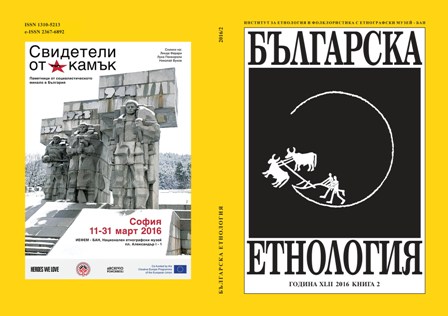
We kindly inform you that, as long as the subject affiliation of our 300.000+ articles is in progress, you might get unsufficient or no results on your third level or second level search. In this case, please broaden your search criteria.

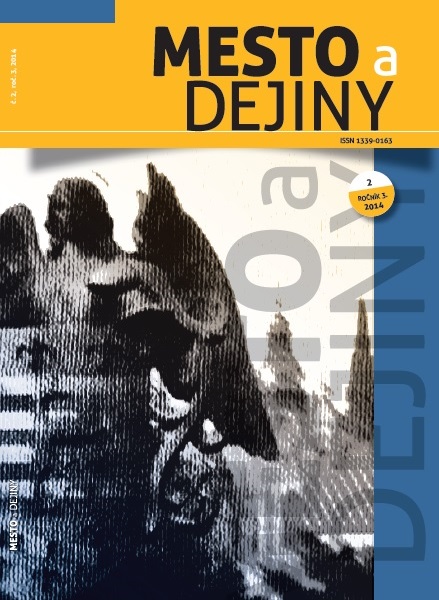
The aim of the paper is to investigate the regional elite of Šariš and its weekly, Naša Zastava which was published in an Eastern Slovak dialect between 1907 – 1918. A considerable amount of Slovak and Hungarian works has been already published on the so-called Slovjak movement. The main sources of research were the documents of the so-called Public Educational Association of the Šariš County. The paper uses this organisation to examine the way how a regional elite contructs the imagined community of Eastern Slovak people before 1918.
More...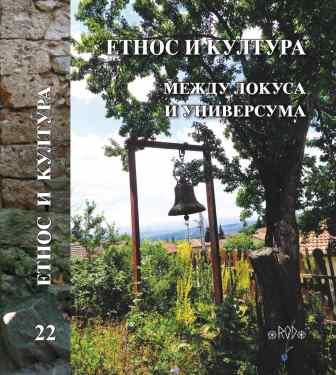
The debate for the birthplace of St. Paisius of Hilendar emerged rather late – practically after the Balkan Wars and the First World War. Until then, everyone was unanimous that the saint originated from the town of Samokov / the village of Dospei, Samokov region. As of today, three hypotheses for the birthplace of St. Paisius of Hilendar are defined: 1. Kralevdol hypothesis (the village of Kralev dol, District of Pernik), 2. Bansko hypothesis (the vilage of Bansko, District of Blagoevgrad), and 3. Samokov hypothesis (the town of Samokov / the village of Dospei). The problem regarding the birthplace of St. Paisius of Hilendar can be solved through the use of three types of evidence: • Folklore stories, toponyms, etc. • Documental (written) evidence – parish registers, attributions, etc. • Language evidences – derived from the draft of the “Slavo-Bulgar History” (Istoriya Slavyanobolgarskaya), preserved in the “St. George Zograf” Zograf Monastery in Mount Athos. All three types of evidence unequivocally display that the birthplace of St. Paisius of Hilendar is the town of Samokov / the village of Dospei.
More...
This manuscript is called Chehlarov’s copy because it is known that Chehlarov was one of his possessors. Also it is known as the Fourth Tarnovo Copy of “Istorija slavjanobolgarskaja“ because it was found in Veliko Tarnovo. This paper contributes to its codicological (it reconstructs the correct order of folios) and language (East Bulgarian dialectal features) characteristics and also argues that it belongs to the family of Father Pantelejmon’s redaction but not to its branch of which Vlad Gladichov’s copy was a protograph. Therefore, terminus ante quem non is 1809 when Father Pantelejmon produced his manuscript.
More...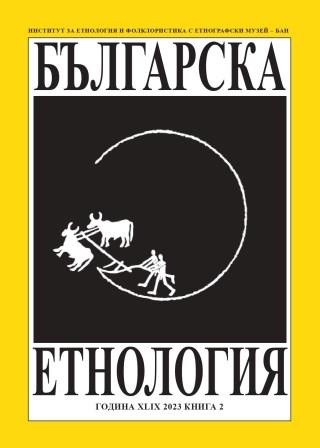
Основната цел на този текст е да представи концепцията за деколонизацията на психичното здраве чрез изследване върху началото на този процес по време наСтудената война. Поради тази причина е въведена дискусията за появата на глобални илокални проекти в транскултурната психиатрия. Като обект на основен документаленанализ избрахме окончателния доклад на транскултурния проект на Световната здравна организация, проведен между 1965 и 1973 г. в Глобалния юг и Глобалниясевер, озаглавен Международно пилотно изследване на шизофренията (СЗО, IPSS1973). Нашата цел е да идентифицираме, чрез анализа на този глобален междукултуренпроект на СЗО, как психичното здраве и културата са били третирани като медико-политически проект, целящ да създаде общ език за психиатрията чрез универсалисткаепистемология. СЗО е обвързана със социалните проблеми на следвоенния период,търсейки в епистемологията на универсалността потвърждение на обстоятелството, чевсички сме равни, а също и възможност да бъдат избегнати бъдещи конфликти междуотделните нации. Световният мир, световното гражданство и универсализмът са важнимедико-политически програми на IPSS и особено на СЗО. По отношение на структуратана психиката, деколониалният подход смята, че всички хора са еднакви, респективно наедно и също ниво. Въпреки че универсалността на шизофренията изиграва важна ролякато критика на колониалната психиатрия, IPSS поема по много рискован и ограниченпът. Проблемът е, че не всички сме еднакви. Заложени са на карта субективността, разнообразието и различни културни и социални аспекти, които трябва да бъдат взети под внимание. В този смисъл опитът да се създаде общ и универсален език за шизофренията повдига въпроси за някои постколониални и транскултурни подходи.
More...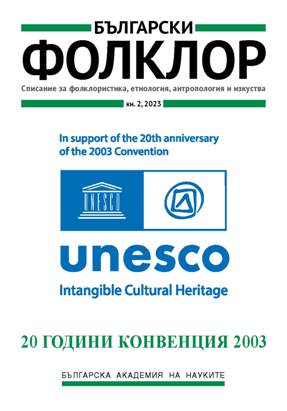
The 2003 Convention and Its Implementation in Bulgaria
More...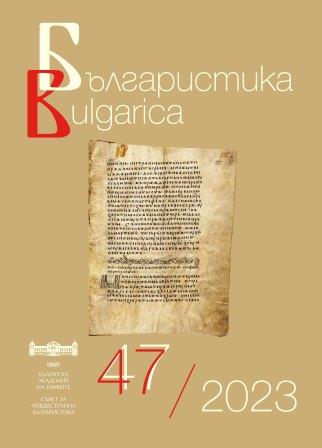
Content of the main Bulgarian scientific journals for the current year in linguistics, literature, history, folklore, ethnography, archaeology and art studies.
More...
Data about scientific events in the field of the humanities in Bulgaria in the second half of 2023.
More...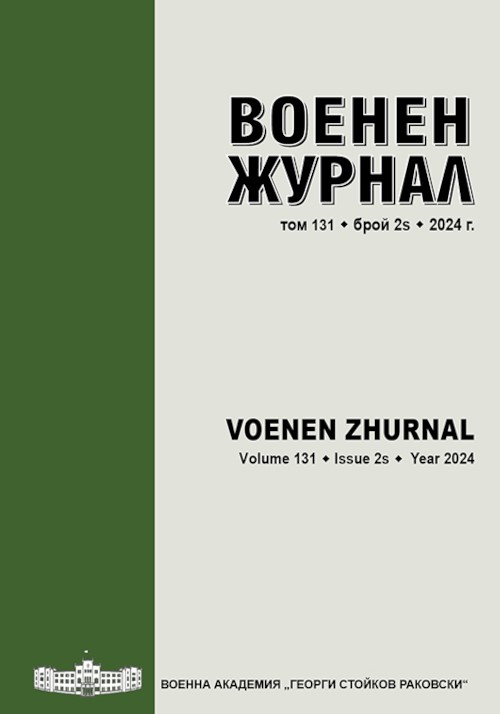
The main goal of the present study is to show for the first time the nuances of the political-diplomatic relations between Bulgaria and NATO in the context of the difficult first years of the democratic changes in the country. The text is based on a large amount of newly released archives from the Ministry of Foreign Affairs and the Central State Archive, thus claiming a high degree of objectivity.
More...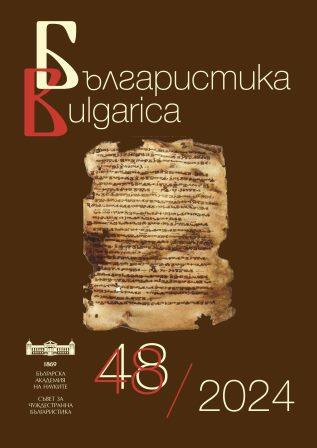
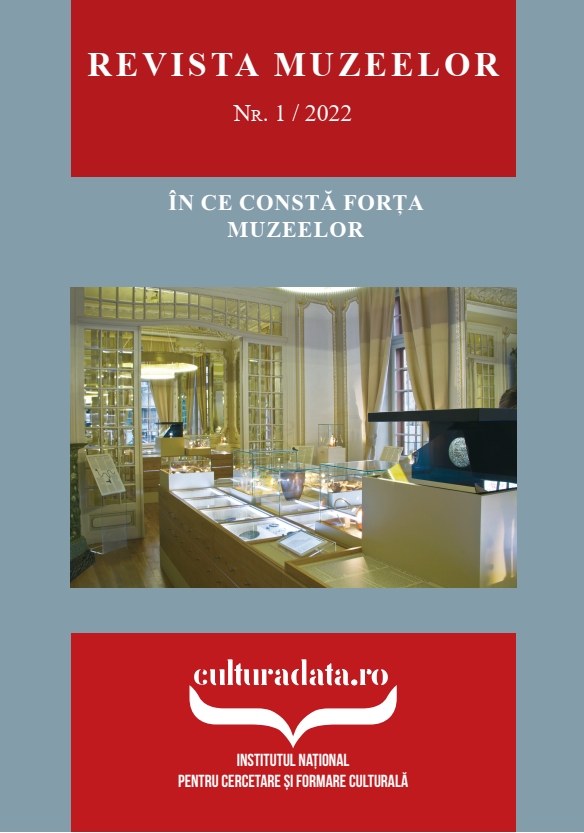
The subject of this paper is still not enough explored, not only from the perspective of museum research but also from that of studies belonging to other fields that take into account the need to integrate culture in urban regeneration. Because this topic is current and relevant for the multitude of cultural and social forms in which the museum institution could become a lasting pillar, we believe that our attempt will allow us to sketch an integrative project from which to extract some useful considerations for future research. The conclusions that emerge from positioning the National Museum of Romanian Literature in Bucharest (MNLR), more precisely its cultural hub located in a disadvantaged area, in the epicenter of urban regeneration through culture of the adjacent area, will hopefully be compelling enough to support a cultural axis. Especially since the targeted area (although it has a rich local cultural heritage, which deserves to be capitalized and whose historical memory must be preserved) does not yet experience the long-awaited revival, MNLR - as already demonstrated - can become a crucial actor, together with partners from civil society, in drawing a new cultural axis in the Romanian capital. This could contribute to the transformation of a physically degraded area with precarious living conditions into an engine for integrating culture into the daily concerns of as many fellow citizens as possible, and not only those belonging to the local community. After all, any attempt to achieve a prospective approach focused on the museum institution only validates the generous and mobilizing slogan of ICOM: “Museums have no borders, they have a network”.
More...
The study presents the graphic works of six modern female artists that are part of the Tulcea Fine Arts Museum`s heritage. Their work, presented in the context of the modern period of development of fine arts in our country, is prefaced by a comparative analysis between feminism and the feminine in art, starting from the general understanding of the concept of feminism. The article aims to promote the graphics collection of the Tulcea museum and to provide a starting point for future analytical studies.
More...

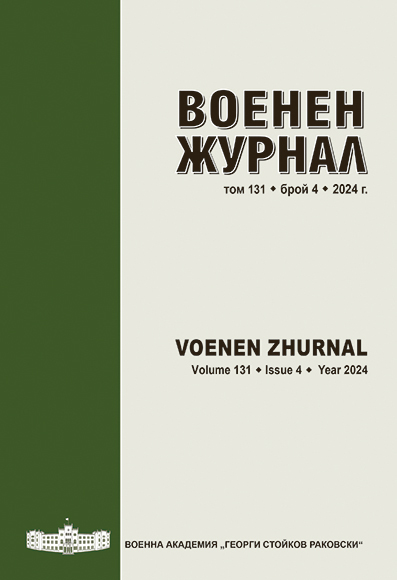
The status of Mount Athos during the First Balkan War and the accompanying peace negotiations was a major issue for Russia, Greece and the Western Great Powers. Paradoxically, Bulgaria, which is one of the countries in the Balkan Union, shows almost no interest in this problem. Bulgarian diplomacy perceives it as a private case that has much more background positions than the big and important problem related to the territorial expansion in the White Sea region and Macedonia. The article answers the question why Bulgarian politics underestimates the importance of the problem related to the status of the monastic territory on the Athos peninsula and its importance for the international prestige of the state, as well as its geostrategic positioning on the Balkans.
More...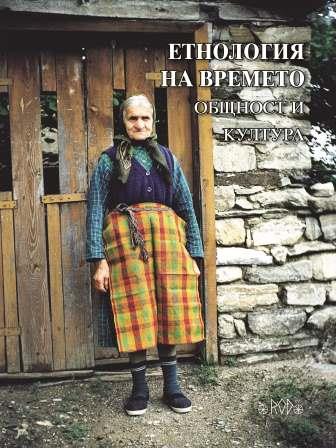
The report presents specific monuments from different periods in Thrace – megalithic, Thracian, Roman, early Christianity and Ottoman period. These monuments are sacral buildings or remains of destroyed sacral buildings, which on some occasion were buried with an earth mound. The most likely reason for this act is the desire to protect the holy places from destruction, further destruction, or desecration. This ritual tradition has survived on our lands for almost three millennia, although not universal and with varying intensity in different epochs.
More...
The text presents a possible anthropological perspective on the topic of memorial practices in Germany, linked to the problem of guilt and its overcoming through the dynamization of cultural memory. The thesis of guilt, being an element of the contemporary process of creating places of memory, is based on observations on memorial places for deserters. They may not be many in number (compared to monuments of other social or political victims in the history of Germany), but are becoming a catalyst of the dynamic process of building monuments called Denkmalarbeit. Indicative of the problem are the long, sometimes even paradoxical processes surrounding the decision-making for such monuments: their place, the artistic realization of every project, the accompanying public events, speeches and comments, the forms of implant. The mentioned factors, together with the conclusions of the observation, create a new sphere in the cultural memory of German society, related to changes in public attitude towards deserters and a search for new forms of memory in the process of acknowledging and overcoming guilt.
More...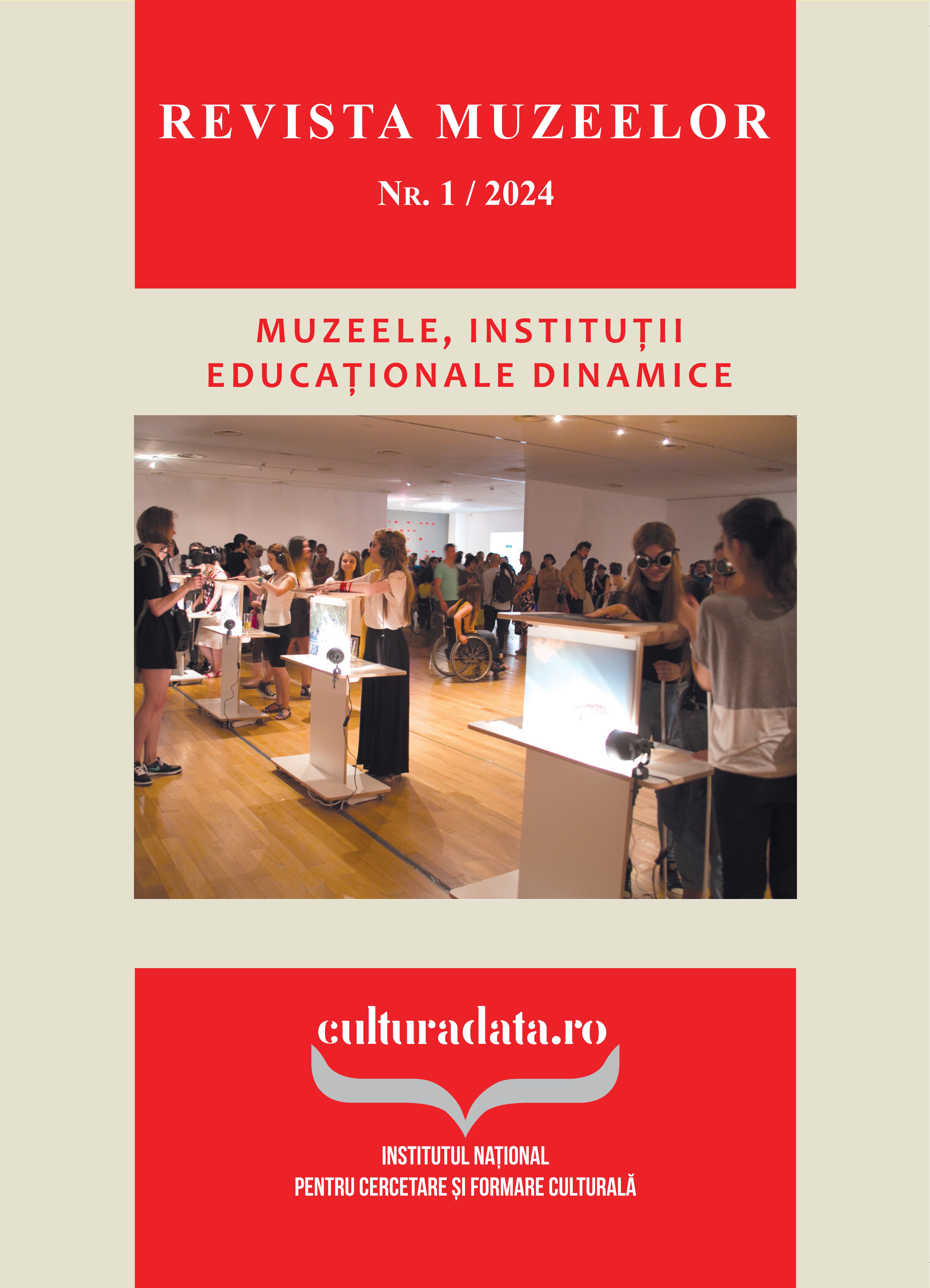
This article explores the interpretation and communication of dark heritage in Sighetu Marmației, focusing on three sites: the Memorial of the Victims of Communism and Anti-Communist Resistance, Pauper’s Cemetery, and the Elie Wiesel Memorial House. We argue that these sites convey Romania’s dark heritage by being associated with events and histories of troubled pasts, namely the Communist oppression and the Holocaust. The analysis addresses how and to what extent objects, politics, and spatiality contribute to the making of a sense of darkness identified in these sites. The article argues that the darkness of these sites is shaped not only by their histories, but also by the narratives constructed around them through the museum exhibits and curation. The study reveals that while these sites aim to educate and memorialise, they also navigate complex political and social dynamics, influencing how their dark heritage is presented and perceived.
More...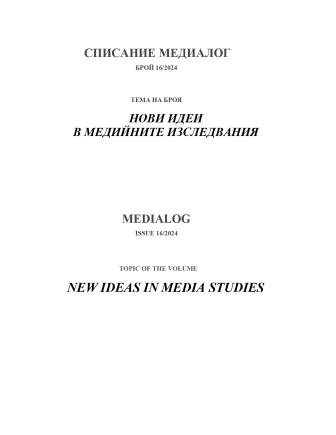
Текстът си поставя за цел да възпроизведе образа на медиите вразказите на участници в масовите протести от лято 2020 г. и стъпва върхуданни от 32 интервюта, проведени по имейл и онлайн конферентна връзкапрез есента на 2020 г. Основният въпрос е как протестиращите виждатролята на медиите в демократичния процес.Медиите нямат устойчив образ в представите на протестиращите задемократичния процес – те би трябвало да са там, но не присъстват,премълчават или създават изкривена репрезентация за действията напротестиращите.Анализът ще открои три фигури на медиите: а) медиите катоприсъстващ/отсъстващ партньор на протестиращите в битките засмисъла б) медиите като източник на изкривена репрезентация напротестиращите; в) медиите като „сянка на институциите“.
More...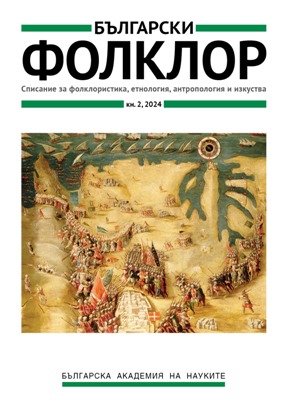
The text is dedicated to the opening of a new museum in the Town of Razlog.
More...